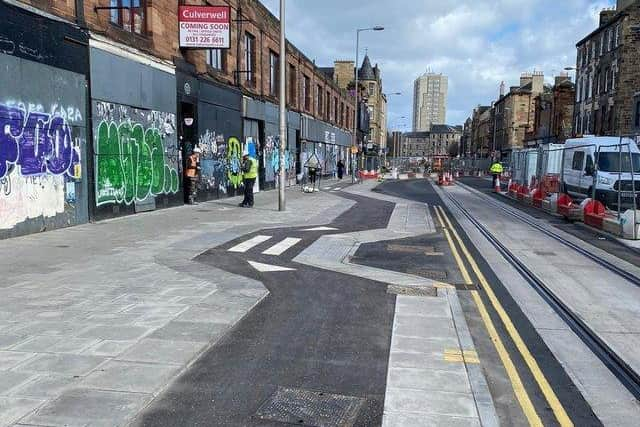Edinburgh transport chief 'ashamed' at problems faced by disabled negotiating Leith Walk
and live on Freeview channel 276
Edinburgh transport convener Scott Arthur said he felt "quite ashamed" as he listened to the problems disabled people and others faced in coping with the revamped Leith Walk.
A succession of deputations to the city council's transport and environment committee on Thursday raised concerns about pedestrian and cycle provision and the way the street is working following the launch of the tram extension.


Advertisement
Hide AdAdvertisement
Hide AdCllr Arthur, who has been in post since May 2022, praised the previous transport committee for pressing ahead with the line to Newhaven, but said it had made a mistake in trying to "do too much" in the limited space of Leith Walk.
A joint deputation from Edinburgh Access Panel, RNIB Scotland and Sight Scotland highlighted the problems faced by blind people trying to negotiate the street.
Kirsty Henderson told the committee: "Consistency in streets design and layout is crucial for blind and partially sighted people to get around safely and independently. Since 2107 we have raised our concern about the lack of detectable kerbs between the cycle path and the pavement, the need to cross the cycle path to access bus stops and the random and misleading use of tactile paving on Leith Walk.
"Sight Scotland highlighted similar concerns including low kerbs that guide dogs could not detect." She said feedback from visually impaired seemed to have been overlooked and urged a review of the layout of Leith Walk.
Advertisement
Hide AdAdvertisement
Hide AdRNIB Scotland supporter Alan Dudley said blind people were defenceless and vulnerable. "Many blind people use pavements to count so they know where they are - we can't look up and see a building or street sign - but with the introduction of continuous paving I could step over and not realise I had passed a street and therefore it's difficult for me to calculate where I am."
Mike Birch of New Town and Broughton community council said they too had highlighted hazards faced by visually impaired people as well as potential conflicts between cyclists and pedestrians due to the narrow cycle paths, pavements and floating bus stops. He said a large number of cyclists had received hospital treatment after coming off their bikes in Leith Walk.
"There are many defects relating to the cycle paths that need to be addressed along with a broader review of the design of this public realm to ensure it's safe for both pedestrians and cyclists."
Cllr Arthur said the tram extension, opened in June 2023, was “good for Edinburgh, good for its citizens and good for our economy”. He said: ”The previous transport committee was absolutely right to press the button on it. Hopefully we'll reach more than a million passengers a month in this coming year which is absolutely incredible.”
Advertisement
Hide AdAdvertisement
Hide AdBut he said in his time as convener, the vast majority of the feedback he received on the trams was about Leith Walk. "The fundamental challenge with Leith Walk is we tried to do too much in that space and I think that's at the heart of the problems we face.
“The real tragedy of that, as we have heard, is that the people who feel that most are pedestrians and people with disabilities trying to move around that space. I felt quite ashamed listening to some of what we heard this morning from all the deputations. So it is really important we learn from this.”
Comment Guidelines
National World encourages reader discussion on our stories. User feedback, insights and back-and-forth exchanges add a rich layer of context to reporting. Please review our Community Guidelines before commenting.